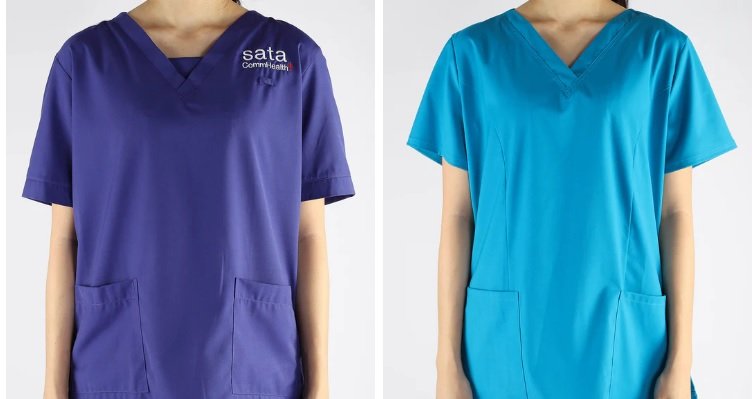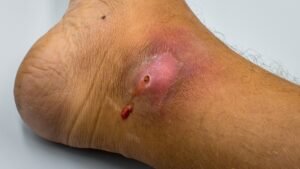High-Quality, Affordable Nursing Scrubs: Enhance Your Professional Look Today

Update your wardrobe with high-quality, affordable nursing scrubs! Enhance your professional look today and make a statement!
Nursing scrub suits are an essential part of healthcare professionals’ attire, providing a balance between comfort, durability, and professionalism. You can browse nursing scrubs at cycuniforms.com to explore a variety of options designed for comfort and functionality. From nurses to doctors, medical assistants to caregivers, those working in the healthcare industry rely heavily on these garments to perform their daily tasks efficiently. The right nursing scrub suit does more than just offer practicality; it also contributes to a hygienic, comfortable, and unified environment in healthcare settings. In this article, we will explore the evolution of nursing scrub suits, the key features that make them vital for healthcare workers, and why they remain a symbol of professionalism in medical environments.
The Evolution of Nursing Scrubs
Nursing scrubs, as we know them today, were not always the go-to attire for healthcare professionals. In the past, doctors and nurses wore formal clothing that varied significantly from department to department. It wasn’t until the 1940s and 1950s that the modern nursing scrub suit began to take shape. Before this, surgical and medical staff typically wore white coats and hats, and they were often expected to wear their street clothing underneath.
However, with the advancements in medicine and an increased understanding of hygiene and infection control, the need for specialized uniforms became evident. During the 1960s, scrub suits made of simple, easy-to-clean fabrics were introduced, initially in the form of pale colors such as blue and green. These colors were chosen for their calming effects and ability to mask stains, as the healthcare environment is often prone to spills and bodily fluids. Over time, scrubs evolved in design and fabric technology, becoming a staple in medical settings.
Key Features of Nursing Scrubs Suits
Nursing scrub suits are purposefully designed to meet the rigorous demands of healthcare workers. Several key features make these uniforms ideal for such fast-paced, high-pressure environments:
1. Comfort and Flexibility
Healthcare workers are on their feet for long hours and may need to move quickly between tasks. Comfort is a top priority when it comes to nursing scrubs suits. These garments are typically made from soft, breathable fabrics such as cotton blends or synthetic materials like polyester and spandex. The flexibility of these fabrics allows for a wide range of movement, so nurses can bend, stretch, and move freely while performing their duties. Many scrub designs include features like elastic waistbands, drawstrings, and adjustable necklines, which contribute to the fit and overall comfort.
2. Durability and Easy Maintenance
The nature of healthcare work means that scrub suits are exposed to heavy wear and tear. They must withstand constant washing and frequent exposure to potentially harsh chemicals and disinfectants. As a result, durability is a key consideration when selecting nursing scrub suits. Scrubs are often designed with reinforced stitching, strong fabric blends, and moisture-wicking properties to maintain their quality and structure over time. Moreover, their easy-to-clean nature ensures that healthcare workers can maintain hygiene standards while reducing the time spent on maintenance. Many scrub suits also feature stain-resistant finishes, making them practical in environments where spills are common.
3. Professional Appearance
In healthcare settings, appearance matters, not just for the sake of hygiene, but also for fostering a sense of professionalism. Scrubs help create a uniform and cohesive look among staff, signaling to patients and colleagues that the wearer is a qualified medical professional. The uniformity of scrubs promotes an atmosphere of orderliness and professionalism in environments such as hospitals, clinics, and doctor’s offices. Even within the seemingly casual look of scrubs, color coding can be implemented to indicate different departments or roles. For instance, surgical teams may wear a specific shade of blue, while pediatric units might opt for brighter colors.
4. Hygiene and Safety
Nursing scrubs also serve an important role in maintaining hygiene and safety in the workplace. The materials used in scrubs are designed to be easy to disinfect, reducing the risk of spreading infections and contaminants. The simple design of scrubs—usually a top and pants—also minimizes the number of places where bacteria can accumulate. In addition, healthcare institutions often have strict guidelines on wearing personal protective equipment (PPE) in conjunction with scrubs, especially in high-risk areas such as operating rooms or isolation wards. Scrubs contribute to creating a barrier between healthcare professionals and potential contaminants, ensuring both the staff and patients remain protected.
Trends in Nursing Scrubs
As healthcare practices have evolved, so too has the style of nursing scrubs suits. Initially seen as purely utilitarian, scrubs have become more stylish and functional over time. Today, nursing scrubs come in a variety of colors, patterns, and designs to suit individual preferences and the culture of the workplace. The trend of “fashion-forward” scrubs has emerged, with healthcare professionals choosing clothing that not only meets practical requirements but also allows for self-expression.
Additionally, some modern designs offer advanced features such as antimicrobial fabrics, which help to reduce the growth of harmful microorganisms, and eco-friendly materials, which align with sustainability efforts. Such innovations ensure that nursing scrubs continue to adapt to the changing needs of healthcare professionals.
The Role of Scrubs in Patient Care
While the focus of nursing scrubs suits is often on the comfort and functionality they provide to healthcare workers, these garments also have an indirect impact on patient care. A nurse or doctor’s ability to perform tasks effectively is influenced by the clothing they wear. Well-designed scrub suits enable healthcare professionals to provide high-quality care, whether they’re performing a routine check-up or participating in complex surgical procedures.
Furthermore, scrubs help build trust with patients. When patients see healthcare workers dressed in a standardized and professional uniform, it reassures them of the expertise and care they will receive. Scrubs serve as a visual cue that the healthcare worker is equipped and ready to help, which can be particularly important in high-stress situations.
Conclusion
Nursing scrub suits are far more than just functional clothing. They are a crucial component of healthcare work environments, offering comfort, durability, and professionalism while contributing to the overall efficiency and hygiene of medical practices. As these garments continue to evolve in both design and technology, they remain an essential tool in ensuring that healthcare professionals can perform their duties with the highest standards of care and safety. Whether through advancements in fabric, style, or functionality, the nursing scrub suit will undoubtedly continue to serve as a symbol of the medical profession’s commitment to both patient well-being and staff comfort.





